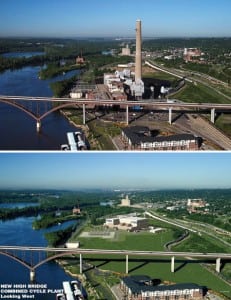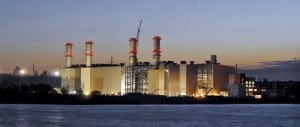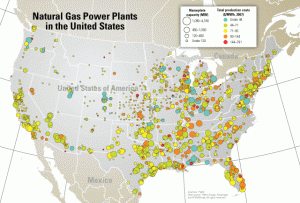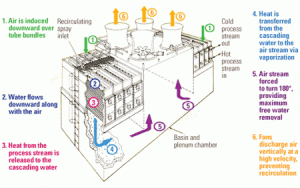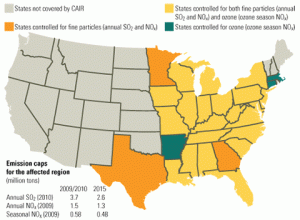-
General
Buffett buys Constellation
The Wall Street financial crisis hit Baltimore’s main street on Thursday, as Constellation Energy Group agreed to be bought by Warren Buffet’s MidAmerican Energy Holdings for $4.7 billion ($26.50 per share.) Among the victims in the sale could be Constellation’s attempt to build a new, third nuclear generating unit at its Calvert Cliffs site in […]
-
General
Coal contines to flex its muscles
More evidence that the demise of coal – Al Gore to the contrary notwithstanding – is greatly exaggerated. On Sept. 11, Tulsa-based Alliance Resource Partners announced it will open a new underground coal mine on the West Virginia-Pennsylvania border, digging high-sulfur Pennsylvania No. 8 coal for the utility market. At the same time, the U.S. […]
-
Gas
High Bridge Combined Cycle Project St. Paul, Minnesota
With greenhouse gas caps on the horizon, more U.S. utilities now have another reason–besides tightening air pollution limits–to consider replacing some of their old coal-fired plants with less-carbon-intensive gas-fired capacity. Even local residents are pleased with the results of an Xcel Energy project to do just that in St. Paul, Minnesota. For Xcel, the key ingredient in the recipe for its recently commissioned High Bridge plant was hiring an EPC contractor smart enough to overcome formidable site constraints.
-
Gas
Kårstø Power Plant, Stavanger, Norway
Power supplies are looking brighter these days in the Land of the Midnight Sun now that the Kårstø combined-cycle power plant has begun commercial operation. Kårstø is Norway’s first commercial onshore gas-fired combined-cycle plant. Combining Scandinavian savvy with German engineering, this 420-MW plant showcases maximum efficiency coupled with minimal emissions.
-
Gas
Port Washington Generating Station, Phase 2, Port Washington, Wisconsin
We Energies’ Port Washington Generating Station Phase 2 is recognized as a 2008 POWER Top Plant for its design innovation and strong teamwork among the owner, contractor, and craft personnel that ensured project completion on time, on budget, and with a stellar safety record. While staying true to its historical roots, the plant will remain a good neighbor and a reliable provider of intermediate-load power to the region for many years to come.
-
Water
Air-cooled condensers eliminate plant water use
River or ocean water has been the mainstay for condensing turbine exhaust steam since the first steam turbine began generating electricity. A primary challenge facing today’s plant developers, especially in drought-prone regions, is incorporating processes that reduce plant water use and consumption. One solution is to shed the conventional mindset that once-through cooling is the only option and adopt dry cooling technologies that reduce plant water use from a flood to a few sips.
-
Water
Wet surface air coolers minimize water use by maximizing heat transfer efficiency
Gas-fired power plant designers and operators are increasingly challenged to reduce their plants’ water consumption and improve their thermal efficiency. Closed-loop, evaporative cooling systems (known as wet surface air coolers, or WSACs) are a cost-effective heat transfer technology that can simultaneously achieve both goals. In addition to providing lower-temperature cooling and condensing while requiring less space and horsepower than conventional systems, WSACs can use poor-quality water as spray makeup.
-
Environmental
EPA’s air program: Still hazy after all these years
While the Bush administration is winding down during its final year, several of its major air pollution initiatives have recently unraveled. These casualties were the result of two recent federal court decisions and the Environmental Protection Agency chief’s refusal to regulate greenhouse gases under existing laws. These developments make it plain that any important new attempts to regulate air emissions will have to be made by the next president.
-
O&M
Put a lid on rising chemical costs
News reports tell us that rapidly growing economies, such as China’s, are importing more oil and raw materials each year, thereby pushing up commodity prices on the world market. One of the side effects of rising commodity prices is considerable increases in the cost of water treatment chemicals. Don’t be tempted to skimp on chemicals to save a buck but risk catastrophic damage. In the words of NASA’s former flight director, Gene Kranz: “Failure is not an option.”
Search


